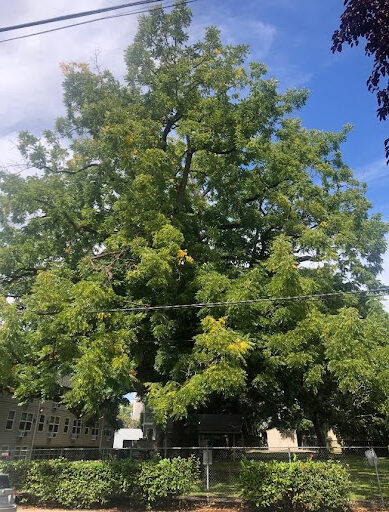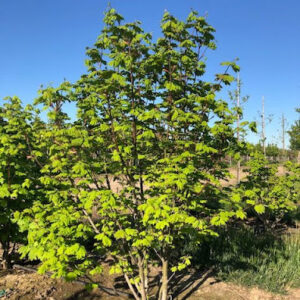Juglans nigra – Black Walnut Tree
Botanical Name: Juglans nigra
Alternate Name: American Black Walnut, Eastern Black Walnut
The Black Walnut tree (Juglans nigra) is a large, stately deciduous tree with a rounded or oval growth habit. Mature trees tend to have an absence of lower branches, with the canopy starting higher up the trunk. The Black Walnut naturally grows in eastern North America. It grows to a height of 75-100 feet with a spread of 75-100 feet.
The Black Walnut tree has a relatively short growing season – being one of the latest to leaf out in the spring and one of the first to drop its leaves in the fall. The foliage is pinnately compound and can grow up to 24 inches in length. Each leaf contains approximately 13-23 lanceolate to oblong shaped leaflets. Often the terminal leaflet can be missing. The leaves turn bright yellow in the fall, providing a stunning autumn display.
The attractive dark gray bark with its vertical ridges and fissures forms beautiful diamond shapes. Black Walnut can make a striking silhouette in the winter months.
The male flowers are hairy catkins that droop from the tree, and the female flowers are more upright, growing on short spikes. The female flowers are followed by the edible nuts in fall, which are encased in a light green covering. The covering rots away when the fruit drop, leaving the hard shells protecting the nuts. These fruit are edible to wildlife and people and are grown and harvested commercially.
The Black Walnut tree’s roots produce juglone, an allelopathic substance, which inhibits other plants from growing under it. This tree thrives in full sun and will not tolerate any shade.
No serious disease or insect problems, but these trees may occasionally get leaf spot or anthracnose, bacterial blight, root rot, or twig dieback. Nut drop in the fall can cause a mess and stain concrete.




